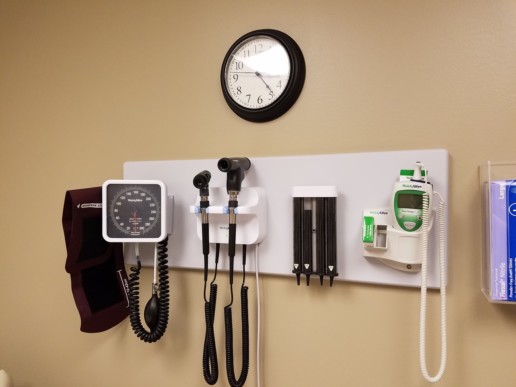How benefit advisers can hold healthcare plans accountable for their prices
Brokers and consultants already know that much of the growth in health benefit costs is not driven by insurer and TPA rate increases, but rather by the increase in the price and volume of healthcare services. While some of these costs are due to growing survivability rates for serious diseases and therapeutic improvements, much are avoidable, such as expenses associated with unnecessary care and unnecessarily expensive care. Evidence of variability of costs is found in the fact that unit cost and utilization can vary wildly from health system to health system, even within the same market.
Read more: 4 drivers of healthcare costs — and what advisers should do
Just because macro healthcare economics is the primary driver of overall health costs, doesn’t mean that health plans are powerless to control price increases. Even though health plans can and do negotiate rates directly with health systems in their networks, too often they don’t do everything they can to offer exceptional value to their customers. They don’t ask the right questions of health systems, they don’t practice thorough utilization management, and they don’t contract exclusively with providers who focus on high-value care. In other words, they don’t work hard enough to eliminate unnecessary costs or to bring prices down. Instead, they treat them as a given and pass those costs on to their customers.
Too often, benefit advisers take the whole healthcare market as a given, especially due to the popularity of broad preferred provider organization (PPO) networks, which include almost every system in an area. But the reality is that economics vary dramatically from system to system, so employee benefit advisors need to understand local economics in order to effectively evaluate network differences and find value. They can do this by:
- Heavily and skeptically questioning carriers and TPAs to understand their networks and participating providers. Examples of questions to ask include: Tell me your opinion about different health systems in your network? How much do negotiated fees vary for outpatient services, professional services, etc.? Why is a specific expensive provider part of your narrow / high-performance network?
It’s also important to ask when a contract with a specific health system is up and if it will be renegotiated soon, since a new contract could include very different rates from the current one. Note that some of the time, carriers will discuss rates as a function of Medicare, but because Medicare DRG rates can vary dramatically from hospital to hospital, an adviser needs to understand Medicare base rates.
- Analyzing claims. Every adviser has plenty of these available to them, and they should be analyzing those claims to determine which providers are lower cost and which are higher cost. In particular, it’s important to look at outpatient rates, facility rates, and professional rates, by specialty. It’s also important to compare the same diagnosis codes across providers. For example, claims could reveal that a hypothetical Dr. Jones operates on 100 patients out of 100, while a hypothetical Dr. Smith operates on only 50 patients out of 100 with the same condition. To figure out why this discrepancy exists, we would have to dig deeper since some doctors or practices may cater to only high-risk patients. Claim data can help shed light on health plan information that is not typically available to the public as health plan rates are often proprietary but appear on claims.
Taking all of these steps will help benefit advisers achieve something essential: holding health plans accountable for their prices. If a health plan doesn’t aggressively hunt for high value providers and reward them, you should ask why. And if you don’t like their answer, you probably identified a plan that isn’t a good fit for your clients because it doesn’t deliver on what matters most: quality care offered at an affordable price without compromising coverage.
SOURCE: Cohen, A. (04 November 2020) "How benefit advisers can hold healthcare plans accountable for their prices" (Web Blog Post). Retrieved from https://www.employeebenefitadviser.com/opinion/how-benefit-advisers-can-hold-healthcare-plans-accountable-for-their-prices
3 tips to boost your healthcare literacy with technology
Historically, the relationship between consumers and their health plan providers has been a distant and somewhat bumpy one. Some health plan providers get a bad rap for poor communications, leaving consumers on their own to navigate a health care system wrought with confusing language, red tape, and unpredictable costs.
The events of a global pandemic have compounded the complexity of dealing with the healthcare system. A recent J.D. Power Survey found that more than 60% of privately insured U.S. health plan members did not receive any guidance about COVID-19 from their providers. The lack of healthcare literacy — knowing what questions to ask and where to get care — has also created a bigger gap between everyday people and their providers. But the good news is technology can help us get more out of our benefits, making our relationship with health plan providers more connected.
The COVID-19 pandemic has exposed the need for more TLC and attention when it comes to benefits. But technology can help us get the most out of our benefits — strengthening our consumer relationship with health plan providers. By engaging with technology, we can improve our healthcare literacy, identify cost-saving opportunities and be more prepared for the unexpected.
If consumers are going to make an informed decision during open enrollment, they’ll need information about the number of visits they paid to the doctor and the costs of their claims to determine if they should change plans. Maybe they’re paying a lot more in premiums, or perhaps they didn’t meet their deductible. Being engaged with your benefits is key to getting the most out of them.
Tip: Avoid going on autopilot with your benefits. Benefits offerings are always changing, and health providers often offer programs that you can opt-in to free. Make sure you’re set up to receive notifications from your benefits administrators and health plan providers. Then take action. Use the preventative care offerings, likes annual wellness check-ups, and enroll in the programs that will serve you now and in the future.
During the pandemic, there has also been an increase in the use of AI to improve communication across the healthcare ecosystem. For example, patient care in the emergency room (ER) is traditionally delivered numerically — first come, first serve. However, AI can help doctors and caregivers at hospitals prioritize the needs of waiting patients. This can lead to a decrease in wait times in crowded hospitals — especially important during the pandemic. In the same vein, AI can help an individual decide if they truly need to visit the ER or if a telehealth option would be more effective and affordable.
Caregiver support platforms, like Cariloop, are using cloud-base technology to improve communication between providers, consumers and their families. This employer-sponsored benefit offers tailored caregiving plans and coaching for families looking for pediatric and senior care. Cariloop, and other caregiver support platforms, use technology to tap into a system of trusted providers and build caregiving scenarios with planning and calculator tools. Users can adjust for different scenarios, review whatresources are available, and receive personal coaching throughout the caregiving journey.
Tip: Viewing benefits as an item to check off a list once a year means you might be overpaying or leaving benefits on the table. Using claims integrations and decision support tools, like planning calculators, can help you and your family fully engage with your benefits and improve your healthcare literacy.
Benefits administrators and health plan providers are beginning to see the importance of supporting the whole person — through mental wellbeing initiatives or by offering online tutoring discounts, streaming virtual fitness programs, and food delivery services.
Tip: Look to the different options that providers use to deliver holistic and preventative care options. For example, year-long access to audio-guided meditation apps like Headspace or programs built around the use of wearable technology that rewards users who meet personalized activity goals. These initiatives go beyond regular patient care and give you tools to support your wellbeing — not just when you’re feeling under the weather.
Supreme Court to Rule Next Year on the ACA's Validity
With the Affordable Care Act (ACA) being questioned on whether it is in-whole or in-part constitutional, the U.S. Supreme Court has decided to rule on this matter again. The ruling regarding the validity of the ACA is expected by June of 2021. Continue reading this blog post to learn more.
The U.S. Supreme Court will again rule on whether the Affordable Care Act (ACA) is constitutional, in whole or in part, during its term beginning this October, the court announced on March 2. A ruling is expected before the term ends in June next year.
In 2019, Congress eliminated the ACA's penalty on individuals who lack health coverage—the so-called individual mandate. In the aftermath, several Republican state attorneys general filed a lawsuit claiming the ACA itself was no longer constitutional, while Democratic states and the House of Representatives, controlled by Democrats, stepped in to defend the statute.
Back in 2012, the U.S. Supreme Court upheld the constitutionality of the ACA's individual mandate as a justifiable exercise of Congress's power to tax. But without an existing tax penalty, ACA critics charge that the health care statute itself, or at least the parts of the act closely linked to the individual mandate, are no longer constitutionally valid.
In December 2018, a Texas district court struck down the ACA but stayed its ruling pending appeal, concluding that the individual mandate is so connected to the law that Congress would not have passed the ACA without it. On appeal, in Texas v. United States, a split panel of the 5th Circuit instructed the district court to rehear the matter and "to employ a finer-toothed comb on remand and conduct a more searching inquiry into which provisions of the ACA Congress intended to be inseverable from the individual mandate."
Now that the Supreme Court has agreed to hear the case, it will not go back to the district court judge for that analysis, leaving the high court free to uphold the entire ACA, uphold the statute but void provisions linked to the individual mandate, or strike down the law in full, although that draconian option is viewed as exceedingly unlikely by legal analysts. The same five justices that upheld the ACA in 2012 remain on the court.
The health law remains fully in effect during the litigation, including all employer coverage obligations and reporting requirements.
The Supreme Court's Packed Schedule
The Supreme Court has placed five cases—including Texas v. United States—on the 2020 docket. This suggests that the hearing could be held in early or mid-October 2020, right before the 2020 election, although we may not know the oral argument schedule until later this spring or summer. In any event, a decision in Texas v. United States would not be expected until 2021 (and presumably not until June 2021).
It is worth noting that the Court will hear a separate ACA-related challenge on the final day of oral argument during its current term. On April 29, 2020, the Court will hear one hour of oral argument in the consolidated cases of Little Sisters of the Poor v. Pennsylvania and Trump v. Pennsylvania. These cases focus on the validity of two Trump-era rules that created broad exemptions to the ACA's contraceptive mandate for religious or moral reasons. And we are still waiting on a decision from the Court over whether insurers are owed more than $12 billion in unpaid risk corridor payments; oral argument was held in that challenge in December 2019 and a decision could be issued at any time.
(Health Affairs)
Lawsuit Stoked Confusion
America's Health Insurance Plans (AHIP), the insurance industry's leading lobbying group, applauded the justices' decision to hear the lawsuit. "We are confident that the Supreme Court will agree that the district court's original decision to invalidate the entire ACA was misguided and wrong," said AHIP President Matt Eyles in a statement.
Association for Community Affiliated Plans (ACAP), a group that represents more than 70 safety-net plans, noted that the lawsuit "has cast a pall of uncertainty over the future of the individual insurance market," according to ACAP CEO Margaret A. Murray.
(Fierce Healthcare)
5th Circuit Highlighted Suspect ACA Provisions
When the 5th Circuit instructed the district court to rehear the matter and to focus on those ACA provisions that Congress intended to be "inseverable from the individual mandate," this suggested, legal analysts said, that the appellate court was unlikely to overturn the ACA in full. However, the appellate court might have struck down those parts of the law directly related to the individual mandate, such as the 5:1 ratio age band, under which insurers can't charge seniors premiums more than five times what younger patients pay, and community rating, which prevents insurers from varying premiums within a geographic area based on age, gender, health status or other factors.
The increase in revenue to insurers from the individual mandate was meant to offset the decrease from these restrictions. It's unclear whether the U.S. Supreme Court will take a similar approach when it hears the case.
(SHRM Online)
SOURCE: Miller, S. (03 March 2020) "Supreme Court to Rule Next Year on the ACA's Validity" (Web Blog Post). Retrieved from https://www.shrm.org/ResourcesAndTools/hr-topics/benefits/Pages/supreme-court-to-rule-next-year-on-CAs-validity.aspx
Federal Appeals Court Takes Up Case That Could Upend U.S. Health System
A federal appeals court in New Orleans has taken up a case against the Affordable Care Act. If the lower court's ruling in the case, Texas v. United States, is upheld, it has the potential to shake the nation's health care system. Read this article to learn more about this case.
The fate of the Affordable Care Act is again on the line Tuesday, as a federal appeals court in New Orleans takes up a case in which a lower court judge has already ruled the massive health law unconstitutional.
If the lower court ruling is ultimately upheld, the case, Texas v. United States, has the potential to shake the nation’s entire health care system to its core. Not only would such a decision immediately affect the estimated 20 million people who get their health coverage through programs created under the law, ending the ACA would also create chaos in other parts of the health care system that were directly or indirectly changed under the law’s multitude of provisions, such as calorie counts on menus, a pathway for approval of generic copies of expensive biologic drugs and, perhaps most important politically, protections for people with preexisting conditions.
“Billions of dollars of private and public investment — impacting every corner of the American health system — have been made based on the existence of the ACA,” said a friend-of-the-court brief filed by a bipartisan group of economists and other health policy experts to the 5th Circuit Court of Appeals. Upholding the lower court’s ruling, the scholars added, “would upend all of those settled expectations and throw healthcare markets, and 1/5 of the economy, into chaos.”
Here are five important things to know about the case:
It was prompted by the tax bill Republicans passed in 2017.
The big tax cut bill passed by the GOP Congress in December 2017 eliminated the penalty included in the ACA for failure to maintain health insurance coverage. The lawsuit was filed in February 2018 by a group of Republican attorneys general and two governors. They argued that since the Supreme Court had upheld the ACA in 2012 specifically because it was a valid exercise of Congress’ taxing power, taking the tax away makes the entire rest of the law unconstitutional.
Last December, Judge Reed C. O’Connor agreed with the Republicans. “In some ways the question before the court involves the intent of both the 2010 and 2017 Congresses,” O’Connor wrote in his decision. “The former enacted the ACA. The latter sawed off the last leg it stood on.”
State and federal Democrats are defending the law.
Arguing that the rest of the law remains valid is a group of Democratic attorneys general, led by California’s Xavier Becerra.
“Our argument is simple,” said Becerra in a statement last Friday. “The health and wellbeing of nearly every American is at risk. Healthcare can mean the difference between life and death, financial stability and bankruptcy. Our families’ wellbeing should not be treated as a political football.”
The Democratic-led House of Representatives has also been granted “intervenor” status in the case.
The Trump administration has taken several positions on the lawsuit.
The defendant in the case is technically the Trump administration. Traditionally, an administration, even one that did not work to pass the law in question, defends existing law in court.
Not this time. And it is still unclear exactly what the administration’s position is on the lawsuit. “They have changed their position several times,” Sen. Chris Murphy (D-Conn.) told reporters on a conference call Monday.
When the administration first weighed in on the case, in June 2018, it said it believed that without the tax penalty only the provisions most closely connected to that penalty — including requiring insurers to sell policies to people with preexisting conditions — should be struck down. The rest of the law should stay, the Justice Department argued.
After O’Connor’s ruling, however, the administration changed its mind. In March, a spokeswoman for the Justice Department said it had “determined that the district court’s comprehensive opinion came to the correct conclusion and will support it on appeal.”
Now it appears the administration is shifting its opinion again. In a filing with the court late last week, Justice Department attorneys argued that perhaps the health law should be invalidated only in the GOP states that are suing, rather than all states. It is unclear how that would work.
Legal scholars — including those who oppose the ACA — consider the case dubious.
In a brief filed with the appeals court, legal scholars from both sides of the fight over the ACA agreed that the lawsuit’s underlying claim makes no sense.
In passing the tax bill that eliminated the ACA’s tax penalty but nothing else, Congress “made the judgment that it wanted the insurance reforms and the rest of the ACA to remain even in the absence of an enforceable insurance mandate,” wrote law professors Jonathan Adler, Nicholas Bagley, Abbe Gluck and Ilya Somin. Bagley and Gluck are supporters of the ACA; Adler and Somin have argued against it in earlier suits. “Congress itself — not a court — eliminated enforcement of the provision in question and left the rest of the statute standing. So congressional intent is clear.”
It could end up in front of the Supreme Court right in the middle of the 2020 election.
Depending on what happens at the appeals court level, the health law could be back in front of the Supreme Court — which has upheld the health law on other grounds in 2012 and 2015 — and land there in the middle of next year’s presidential campaign.
Democrats are already sharpening their rhetoric for that possibility.
“President Trump and Republicans are playing a very dangerous game with people’s lives,” Senate Minority Leader Chuck Schumer told reporters on a conference call Monday.
Murphy said he is most concerned that if the lower court ruling is upheld and the health law struck down, Republicans “won’t be able to come up with a plan” to put the health care system back together.
“Republicans tried to come up with a replacement plan for 10 years, and they couldn’t do it,” he said.
SOURCE: Rovner, J. (9 July 2019) "Federal Appeals Court Takes Up Case That Could Upend U.S. Health System" (Web Blog Post). Retrieved from https://khn.org/news/federal-appeals-court-takes-up-case-that-could-upend-u-s-health-system/
The approaching ACA premium tax moratorium – take 2
In 2010, Congress scheduled the 2014 Affordable Care Act premium tax. Then in 2015 Congress introduced a one-year moratorium on the premium tax that would take place in 2017. This past January, Congress placed another moratorium for the ACA premium tax in 2019. Continue reading to learn more.
In 2010, Congress scheduled the 2014 introduction of the Affordable Care Act premium tax (aka the health insurer fee). Then, via the PACE Act of October 2015, Congress placed a one-year moratorium on this 4% or so premium tax for calendar year 2017. You might recall our ensuing discussion a couple of years ago about how employers sponsoring fully insured medical, dental and/or vision plans could leverage this 2017 moratorium to their advantage.
See also: ACA: 4 things employers should focus on this fall
Meanwhile, did you notice back in January that Congress placed another moratorium on this tax, this time for 2019? To review:
- 2014-2016 – Tax applies
- 2017 – Under moratorium
- 2018 – Tax applies
- 2019 – Under moratorium
- 2020 – Tax scheduled to return
Fortunately, in moratorium years, fully insured medical, dental and vision premiums should be about 4% lower than they would have been otherwise, with these savings passed along proportionately by most employers to their plan participants.
Unfortunately, the budgetary challenge of this on-again-off-again Congressional approach is that when the tax returns, fully insured renewals naturally go up about 4% more than they would have otherwise. For example, an 8% premium increase becomes 12%.
See also: Proposals for Insurance Options That Don’t Comply with ACA Rules: Trade-offs In Cost and Regulation
Another complication occurs as employers annually compare the expected and maximum costs of self-funding their plans versus fully insuring the plans. Because this tax generally does not apply to self-funded plans, in “tax applies” years, any expected savings from self-funding will show about 4% higher than in moratorium years. This math especially complicates the financial comparison of level funding contracts to fully insured contracts (almost all level funding products are self-funded contracts).
With the Jan. 1 fully insured medical, dental and vision renewals beginning to cross our desks, what should employers do?
First, they should review the renewal’s rating methodology page and ensure that this tax was not included in the proposed 2019 premiums. If the rating methodology page was not provided, request it. If this request fails, ask for written confirmation that this tax is not included in your plan’s 2019 premiums.
Second, when comparing 2019 expected and maximum mature self-funded plan costs to 2019 fully insured premiums, extend the analysis to 2020 and project what will happen when this 4% fully insured tax tide returns.
See also: Pre-existing Conditions and Medical Underwriting in the Individual Insurance Market Prior to the ACA
Finally, complicating matters, several states, including Maryland, introduced new or higher state premium taxes for 2019. Ask your benefits consultant if these actions will impact your plans. For Maryland employers sponsoring fully insured plans, for example, the new additional one-year premium tax will essentially cancel out the 2019 ACA premium tax moratorium.
SOURCE: Pace, Z (27 September 2018) "The approaching ACA premium tax moratorium – take 2" (Web Blog Post). Retrieved from https://www.benefitnews.com/opinion/the-approaching-obamacare-premium-tax-moratorium?brief=00000152-14a5-d1cc-a5fa-7cff48fe0001
Two opportunities created by association health plans
The new regulations around association health plans (AHPs) — which loosen restrictions for small businesses, franchises and associations — create two distinct opportunities in the benefits industry.
The first is for brokers, who will be crucial advisors to employers eligible for the new coverage options now available.
The second opportunity is for benefits and HR tech vendors, who will be instrumental in managing the transactional and administrative challenges that would otherwise hinder AHP success.
What challenges do association health plans represent? Let’s consider an example — the Nashville Hot Chicken restaurant franchise.
Let’s say Nashville Hot Chicken has 1,000 franchisees, each with five full-time employees. Before AHP options became available to this organization, these five-employee groups would either have had to pursue small group coverage, or employees would have had to find individual plans.
Both options likely would have been prohibitively expensive for the organization or the employees. With the new AHP regulations, however, these 1,000 franchisees may be able to pull all 5,000 workers together and create a large group benefits plan.
In doing so, they would reap the advantages of collective purchasing, just like large groups do. However, this AHP would not work like a regular group plan.
If a regular group has 5,000 employees, they would all be part of a centrally-operated payroll system and the insurance companies would receive just one check for all of the employees enrolled at the group. But under an AHP of franchisees, all the payroll systems would operate independently, and there is no clear, centralized entity to pay carriers.
This creates a massive administrative headache for Nashville Hot Chicken corporate, as well as all the individual franchise owners. In other words, who is going to manage the AHP?
Here’s where the brokers come in. Employers need brokers to walk them through all the complexities of AHPs, including sourcing carriers, third-party vendors, and compliance needs.
It would also be incredibly impractical to manage 5,000 employees through 1,000 separate businesses without a benefits and HR platform.
But brokers can provide a solution to this challenge by adopting a platform. With a benefits and HR system, the various administrative differences from franchisee to franchisee can be accounted for, while still allowing the 5,000-life group to enroll in the group offering.
By removing the administrative headache, benefits tech makes AHPs a real option for Nashville Hot Chicken. But it also gives the tech-savvy broker a clear leg up on the competition. A broker without a tech solution will be at a severe disadvantage for Nashville Hot Chicken’s business compared to a broker who has a platform.
So as small employers, franchisees and industry associations band together for group coverage, benefits tech can give brokers a competitive differentiator for this new business segment.
Read the article.
Source:
Tolbert A. (1 March 2018). "Two opportunities created by association health plans" [Web Blog Post]. Retrieved from address https://www.benefitspro.com/2018/03/01/two-opportunities-created-by-association-health-pl/
Apple launching concierge health care centers for employees
Did you know Apple is now offering healthcare centers for their employees? Check out this article from Benefit Pro for further information.
This spring, Apple employees will see the first phase of Apple’s new approach to employee health care: on-site health clinics.
According to Healthcare IT News, Apple plans to launch a group of internal health centers as it moves to boost the health and wellness of its employees. According to the report, the company has already “quietly published a webpage for the program, called AC Wellness Network, which includes a description of the company’s goals as well as information on a number of open positions.”
“AC Wellness Network believes that having trusting, accessible relationships with our patients, enabled by technology, promotes high-quality care and a unique patient experience,” Apple has said on the webpage. It continues, “The centers offer a unique concierge-like healthcare experience for employees and their dependents. Candidates must have an appreciation for the patient experience and passion for wellness and population health—integrating best clinical practices and technology in a manner that drives patient engagement.”
Apple’s move comes in the wake of an earlier declared partnership among Amazon, JPMorgan Chase and Berkshire Hathaway for their own independent health care company intended to bolster employee health at lower cost than conventional providers.
AC Wellness, says the report, will exist as “an independent medical practice,” although the company is a subsidiary of Apple. Job listings include not just physicians but also such positions as workflow designers, and the website listings suggest the first centers will be located in Santa Clara, California and in the company’s Cupertino, California campus.
Other recent health care steps taken by the company, according to an HRDive report, include its January announcement that it is making personal health records accessible on the latest iPhones, as well as its exploration of ways its Apple Watch could have medical applications, like detecting irregular heartbeats in wearers.
According to a CNBC report, some former Stanford Health Care employees have been affiliated with AC Wellness for at least five months. Says Healthcare IT News, “[t]hese sources also said that Apple will use the centers as a testing ground for its upcoming health and wellness products prior to large-scale consumer rollout, and that the company notified third-party vendors this week about its upcoming health clinics.”
Read the article.
Source: Satter M. (1 March 2018). "Apple launching concierge health care centers for employees" [Web Blog Post]. Retrieved from address https://www.benefitspro.com/2018/03/01/apple-launching-concierge-health-care-centers-for/
Employer Responsibility Under the Affordable Care Act
Here's a helpful chart from the Kaiser Family Foundation to decipher the penalties employers may have for not offering ACA coverage in 2018.
The Affordable Care Act does not require businesses to provide health benefits to their workers, but applicable large employers may face penalties if they don’t make affordable coverage available. The employer shared responsibility provision of the Affordable Care Act penalizes employers who either do not offer coverage or do not offer coverage that meets minimum value and affordability standards. These penalties apply to firms with 50 or more full-time equivalent employees. This flowchart illustrates how those employer responsibilities work.
Read the article.
Source:
Kaiser Family Foundation (5 March 2018). "Employer Responsibility Under the Affordable Care Act" [Web Blog Post]. Retrieved from address https://www.kff.org/infographic/employer-responsibility-under-the-affordable-care-act/
While Talk About Opioids Continues In D.C., Addiction Treatment Is In Peril In States
How is Washington handling the opioid crisis? Let's find out in this article from Kaiser Health News.
Opioids were on the White House agenda Thursday — President Trump convened a summit with members of his administration about the crisis. And Congress authorized funds for the opioid crisis in its recent budget deal — but those dollars aren’t flowing yet, and states say they are struggling to meet the need for treatment.
The Oklahoma agency in charge of substance abuse has been told by the state’s legislature to cut more than $2 million from this fiscal year’s budget.
“Treatment dollars are scarce,” said Randy Tate, president of the Oklahoma Behavioral Health Association, which represents addiction treatment providers.
It’s like dominoes, Tate said. When you cut funding for treatment, other safety-net programs feel the strain.
“Any cuts to our overall contract,” he said, “really diminish our ability to provide the case management necessary to advocate for homes, food, shelter, clothing, primary health care and all the other things that someone needs to really be successful at tackling their addiction.”
In just three years, Oklahoma’s agency in charge of funding opioid treatment has seen more than $27 million dollars chipped away from its budget — thanks to legislative gridlock, slashed state taxes and a drop in oil prices (with the additional loss in state tax revenue that resulted).
Jeff Dismukes, a spokesman for Oklahoma’s Department of Mental Health and Substance Abuse Services, says the already lean agency has few cost-cutting options left.
“We always cut first to administration,” he said, “but there’s a point where you just can’t cut anymore.”
The agency may end up putting off payments to treatment providers until July — the next fiscal year. Tate says that could be devastating.
“Very thinly financed, small rural providers are probably at risk of going out of business entirely — up to and including rural hospitals,” he said.
Getting treatment providers to open up shop in rural areas is really hard, even in good times, and more financial uncertainty could make that problem worse. In the meantime, according to an Oklahoma state commission’s opioid report, just 10 percent of Oklahomans who need addiction treatment are getting it.
That statistic is similar in Colorado. And as 2018 began, Colorado’s escalating opioid crisis got worse, when the state’s largest drug and alcohol treatment provider, Arapahoe House, shut its doors.
The facility provided recovery treatment to 5,000 people a year. Denise Vincioni, who directs another treatment center, the Denver Recovery Group, says other facilities have scrambled to pick up the patients.
Most of Arapahoe’s clients were on Medicaid. Autumn Haggard-Wolfe, a two-time Arapahoe House client who is now in recovery, worries the facility’s closing will have dire consequences, especially for people who need inpatient care, as she did.
“I feel like the only other option right now in therapy would be jail for people,” she said, “and people die in there from withdrawing.”
Arapahoe House’s CEO blamed its closure on the high cost of care and poor government reimbursement for services.
The mother of Colorado state lawmaker Brittany Pettersen struggled with addiction, and was treated at Arapahoe House. Pettersen says treatment centers rely on a crazy quilt of funding sources and are chronically underfunded — often leaving people with no treatment options.
“We have a huge gap in Colorado,” Pettersen said, “and that was before Arapahoe House closed.”
She is pushing legislation in the state to increase funding for treatment. But to get tens of millions of dollars in federal matching funds, Colorado lawmakers need to approve at least $34 million a year in new state spending.
That price tag may simply be too high for some lawmakers. But either way, she added, “It’s going to take a lot to climb out of where we are.”
Colorado did get new federal funds to fight the opioid crisis through the 21st Century Cures Act, passed in December of 2016, but it was just $7.8 million a year for two years — divvied up among a long list of programs.
Read the article.
Source: Daley J.,Fortier J. (5 March 2018). "While Talk About Opioids Continues In D.C., Addiction Treatment Is In Peril In States" [Web Blog Post]. Retrieved from address https://khn.org/news/while-talk-about-opioids-continues-in-dc-addiction-treatment-is-in-peril-in-states/
National ACA Marketplace Signups Dipped a Modest 3.7 Percent This Year
In this article from Kaiser Family Foundation, we are going to take a brief look at the ACA sign-ups this year.
Overall ACA marketplace signups for 2018 dropped by 3.7 percent compared to last year’s enrollment period, a new analysis from the Kaiser Family Foundation finds.
11,760,533 people signed up for 2018 health insurance coverage on the ACA individual marketplaces, amid steep reductions in federal funding for outreach and navigators, an enrollment period half as long, and a climate of political uncertainty surrounding the law. The federal government also terminated cost-sharing subsidy payments to insurers in advance of the open enrollment period, leading to increases in premiums but also increased premium subsidies for many consumers that in some cases led to reductions in what they had to pay for coverage.
As a group, the 15 states plus the District of Columbia with state-based marketplaces, including those using the Healthcare.gov enrollment platform, exceeded last year’s totals this year by .2 percent, while the 34 states that relied on the federal healthcare.gov marketplace saw total signups drop by about 5.3 percent. State-based marketplaces control their own funding for outreach and consumer assistance.
Fifteen states and the District of Columbia exceeded 2017 signups in 2018 – eight of these were state-based marketplaces, three were state-based marketplaces using the Healthcare.gov enrollment platform (KY, NV, and OR), and five were federal Healthcare.gov marketplaces.
Rhode Island (12.1%), Kentucky (10.4%), and Washington State (7.6%) saw the largest share increases in signups, while Louisiana (-23.5%), West Virginia (-19.5%), and Arizona (-15.6%) had the largest drop in shares of signups.

Read the original article here.
Source: Kaiser Family Foundation (7 February 2018). "National ACA Marketplace Signups Dipped a Modest 3.7 Percent This Year" [Web Blog Post]. Retrieved from address https://www.kff.org/health-reform/press-release/national-aca-marketplace-signups-dipped-a-modest-3-7-percent-this-year/










